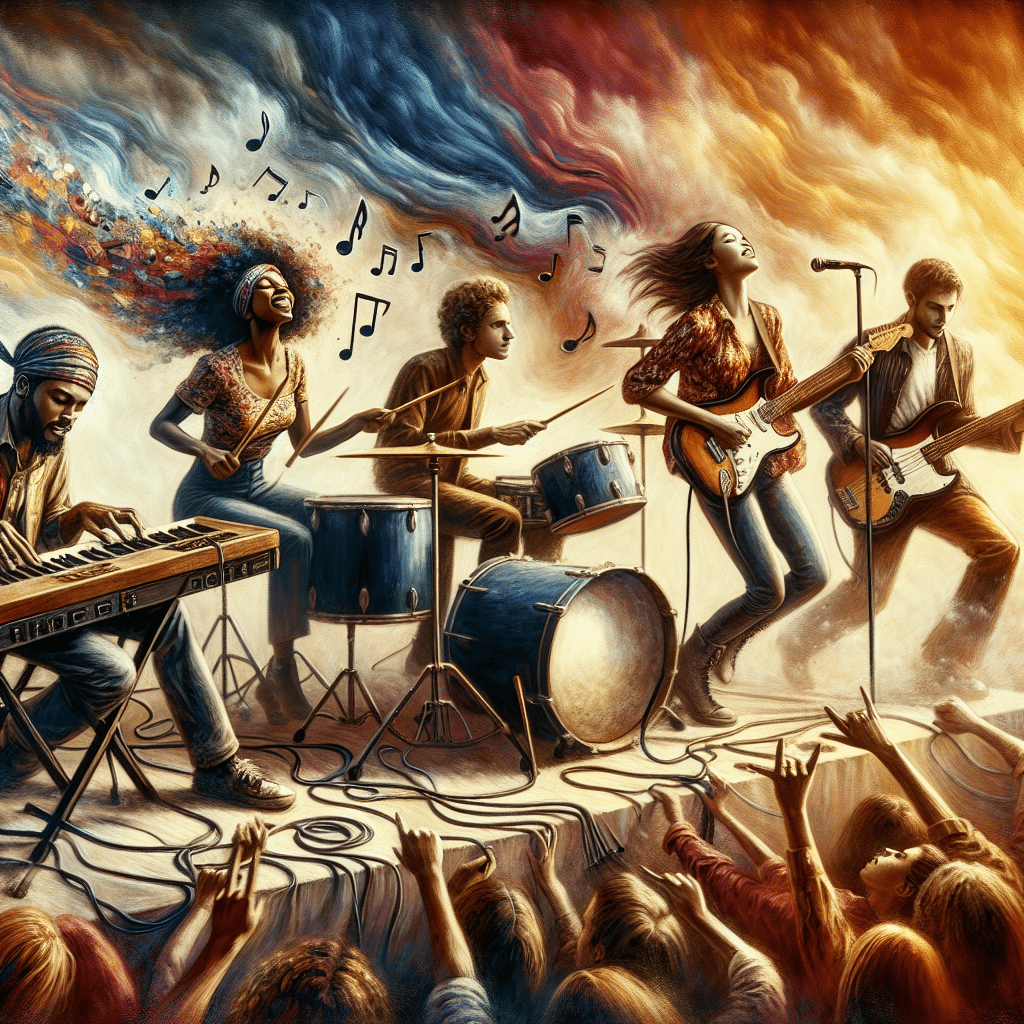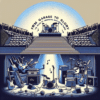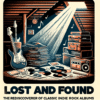Reviving the Sound: How Indie Rock is Shaping Today’s Music Landscape

The indie rock genre has a rich history of innovation and evolution, continuously reshaping the music landscape across generations. Today, as it resurfaces, indie rock is not just a backwoods revival; instead, it shapes mainstream music while encouraging a vibrant community of artists and fans alike. In this article, we will explore how today’s indie rock evolution is carving a new narrative, influencing mainstream music, and reigniting the creative spirit within the industry.
The Roots of Indie Rock
To understand how indie rock is shaping today’s music landscape, we must first look at its origins. Emerging in the 1980s, indie rock was characterized by its DIY ethic and an independent approach to music production. Artists often avoided major labels, choosing instead to release their music through independent record companies. This spirit of independence has become a defining feature of the genre, allowing for artistic freedom and diverse sound experimentation.
bands like R.E.M., The Smiths, and Sonic Youth helped pave the way for the indie sound. Their music combined eclectic influences and non-commercial aspirations, which resonated with a generation yearning for authenticity. The genre thrived in the 1990s and early 2000s, with bands such as The Strokes and Arcade Fire pushing indie rock's boundaries while grabbing mainstream attention.
See Also: Revisiting the Rock Icons: A Deep Dive into the Legacy of Classic Rock Bands
Revisiting the Rock Icons: A Deep Dive into the Legacy of Classic Rock BandsThe Revival: A New Wave of Indie Rock
Today, indie rock is experiencing a revival characterized by the infusion of fresh influences and new technologies. Artists are reviving the genre for a new generation, blending traditional indie sounds with elements of electronic music, hip-hop, and even pop. This diversification reflects the evolving tastes of contemporary listeners, who crave depth and originality in an era dominated by algorithm-driven music consumption.
One noteworthy band leading this revival is Big Thief. Their blend of introspective lyricism with lo-fi production encapsulates the indie ethos while attracting a broad audience. Similarly, artists like Phoebe Bridgers and Snail Mail bring a new emotional vulnerability that resonates deeply with listeners, proving that indie rock can adapt while maintaining its core values.
Technology and Accessibility
The rise of digital technology has also played an essential role in reviving indie rock. Artists can now easily distribute their music through platforms like Bandcamp, Spotify, and SoundCloud, subsequently bypassing traditional industry barriers. This has democratized music production, allowing musicians to connect directly with their audience. The result is an ecosystem full of emerging talents who can be incredibly influential without the backing of major labels.
See Also:![Rocking Under the Stars: Highlights from [Festival Name] 2023](https://hits1000.com/wp-content/uploads/2024/10/1728963839-100x100.png) Rocking Under the Stars: Highlights from [Festival Name] 2023
Rocking Under the Stars: Highlights from [Festival Name] 2023Independent artists are now producing and sharing high-quality music using accessible recording technology, which has led to a surge in indie rock's visibility. This newfound accessibility fosters a deeper engagement between artists and fans, creating communities built on shared experiences and music appreciation.
Influencing Mainstream Music
One of the most exciting aspects of the current revival is how indie rock is impacting mainstream music. Major artists increasingly draw inspiration from indie bands, leading to a fusion of sounds within pop, hip-hop, and electronic music. The chart success of artists like Billie Eilish and Lizzo, who incorporate indie sensibilities into their pop sound, illustrates this blend.
Moreover, collaborations between prominent pop artists and indie musicians have become more common, facilitating a cross-pollination of ideas and styles. For example, the partnership between Taylor Swift and Bon Iver showcases how indie rock can intertwine with mainstream pop, resulting in fresh and innovative music.
Live Music and The Indie Experience
See Also: From Garage to Glory: The Rise of Emerging Indie Rock Bands
From Garage to Glory: The Rise of Emerging Indie Rock BandsWhile streaming platforms have transformed how we consume music, live music experiences remain integral to the indie rock culture. This revival has reignited interest in live performance, with indie artists embracing intimate venues and festivals that celebrate independent music. Events like Pitchfork Music Festival and Coachella have begun featuring an increasing number of indie rock acts, highlighting their significance in the broader music landscape.
Attending an indie concert often feels communal and personal, fostering connections between fans and artists. This sense of intimacy is vital for contemporary listeners—generating community identification that is sometimes absent in larger pop shows. Today's indie rock events celebrate not only the music but also the art, culture, and atmosphere of indie life.
The Future of Indie Rock
The future of indie rock appears bright, driven by innovation and a commitment to authenticity. As emerging artists continue to experiment with their sound and production styles, we can expect the genre to evolve further. The blending of genres seems poised to become a defining characteristic of the indie music landscape, pushing creative boundaries and enriching the auditory experience for listeners.
Additionally, with popular platforms and social media in the hands of artists, it is likely that indie rock will persist as a breeding ground for new talent. As music lovers support their favorite independent acts online and through live events, the genre's ethos of creativity, passion, and collaboration will undoubtedly remain influential.
See Also: Beyond the Charts: Indie Rock's Influence on Modern Music Culture
Beyond the Charts: Indie Rock's Influence on Modern Music CultureConclusion
The revival of indie rock is more than just a nostalgic echo; it is a powerful movement reshaping the music landscape today. By fostering authentic connections between artists and fans, challenging mainstream norms, and embracing innovation, today’s indie rock scene underscores the vitality of artistic independence and expression.
Indie rock’s influence on contemporary music is clear; its blend of genres, emotional depth, and DIY spirit continue to resonate. As we move forward, it remains crucial to support independent artists, ensuring that this vibrant sound continues to thrive. The rejuvenation of indie rock serves as a reminder that music is not only about popularity but about connection, artistry, and the genuine spirit of creative exploration.
FAQs
Q1: What is indie rock?
See Also: The Cross-Genre Evolution of Indie Rock: Blurring the Lines of Musical Identity
The Cross-Genre Evolution of Indie Rock: Blurring the Lines of Musical IdentityA1: Indie rock is a music genre that originated in the 1980s, characterized by its independent approach to music production and a DIY ethic. It often features a diverse range of sounds and lyrical themes, focusing on artistic freedom and authenticity.
Q2: How is indie rock influencing mainstream music today?
A2: Indie rock is influencing mainstream music by inspiring major artists to incorporate indie sounds and sensibilities into their music. Collaborations between indie and mainstream artists further promote this crossover, leading to a richer and more diverse musical landscape.
Q3: Why is live music important for indie rock?
A3: Live music is crucial for indie rock because it fosters a sense of community and intimacy between artists and fans. Indie concerts are often held in smaller venues, creating a personal atmosphere that enhances the overall music experience.
See Also: Lost and Found: The Rediscovery of Classic Indie Rock Albums
Lost and Found: The Rediscovery of Classic Indie Rock AlbumsQ4: How can I support indie artists?
A4: You can support indie artists by purchasing their music, attending their shows, streaming their songs on platforms like Bandcamp, and sharing their work on social media. Engaging with indie music communities also helps amplify their reach and influence.
Q5: What does the future hold for indie rock?
A5: The future of indie rock looks promising, with new artists emerging who continue to experiment with sound and production. The genre will likely adapt and integrate new influences while preserving its core values of creativity, independence, and community connection.
If you want to know other articles similar to Reviving the Sound: How Indie Rock is Shaping Today’s Music Landscape you can visit the category Rock.
